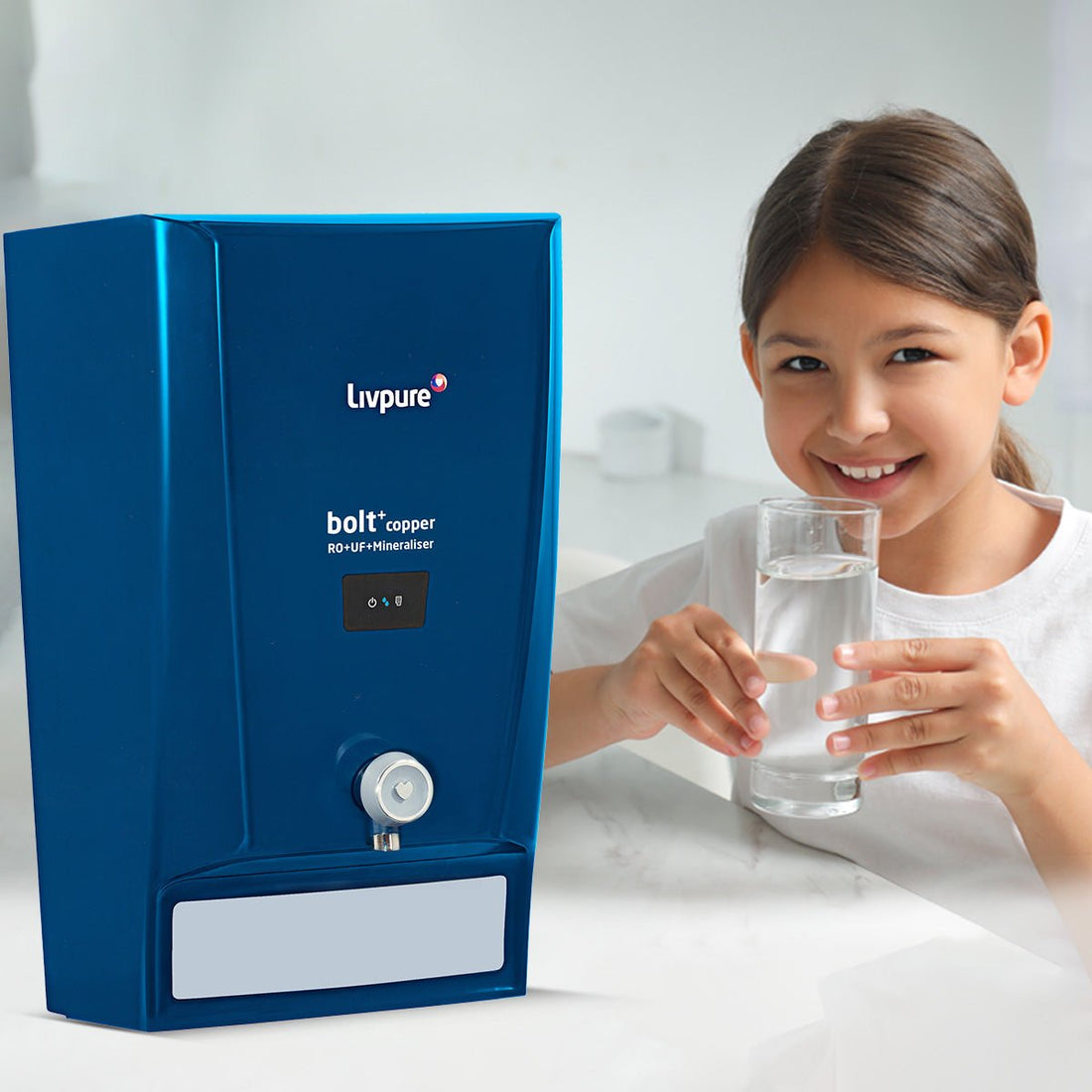Water is life, and ensuring it’s safe for consumption should always be on your priority list. However, many people don’t realise that water is a universal solvent and dissolves many substances. That said, you may have heard of the term TDS in water. And elevated levels of TDS in the drinking water may cause several health problems. But what is the TDS level in water? What it means, and how much TDS is required to make water unsafe or safe for drinking?
If all these questions are bothering you, here are the answers. Let’s learn about TDS.
What is TDS in Water?
The TDS full form is total dissolved solids, which means the concentration of dissolved particles or solids in water. It contains inorganic salts, including calcium, magnesium, chlorides, sulphates, bicarbonates etc. Apart from this, it also comprises many inorganic mixtures that quickly dissolve in water.
TDS leads to the salinity of water, making it less palatable. These solids are also aren’t ideal for your health. Hence, it would help if you tried to filter them out before intake.
But how does TDS affect your daily life, and why is it crucial to measure TDS?
Why Should You Measure Total Dissolved Solids?
In an ideal condition, water is colourless, odourless, and tasteless. Even after passing through the water filters, the drinking water’s TDS levels may be high. It results in the salty, metallic and harsh flavour of the water, which you may want to avoid drinking.
Besides, water with high TDS may contain microorganisms that can lead to various waterborne diseases. There are many other factors why you may want to measure the TDS levels in the water. Here is a list of some of these reasons to give you a better glimpse:
Health Issues
Sometimes, the high TDS may not be directly unsafe to drink. However, it may also contain other hazardous substances like lead and copper.
Lead exposure is responsible for causing brain and nervous system impairment. And high levels of copper consumption can lead to nausea in humans. Checking the TDS levels may help you reduce these risks and drink safe water.
Unpleasant Taste and Smell
Tap or drinking water with a high level of TDS in it may taste bitter and have an unpleasant smell. The taste of the water gets more bitter as the TDS levels increase. And drinking such water can may you feel ill and disgusting.
For Cooking
Cooking with high TDS-level water can change the taste of the food, at the least. If your water has high chlorine levels, the food may absorb an unpleasant taste when you boil it in the water. Such as, it may spoil your food and make it unappetising to eat.
Safety of Plumbing and Appliances
Water that contains high levels of dissolved calcium and magnesium is hard and results in high TDS levels. High levels of calcium and magnesium form scale build-up and collect in the pipes. By checking the TDS level and reducing it, you may avoid expensive pipe replacements.
It also ensures the safety of your home appliances which may stop working because of the build-up.
Spots and Build Up
If you have been noticing spots on your dishes, sink and floor no matter how properly you wash them, it’s due to the high TDS level.
What is the Ideal Level of TDS in Water?
The measuring unit to find the level of TDS in water is milligrams per unit of volume of water, which is mg/L. It is also referred to as parts per million (ppm). Meaning PPM (Parts Per Million) and mg/L are the same. And you can use both units of measurement interchangeably for TDS.
Wondering how much TDS is required in a water purifier?
The WHO points out that there isn’t reliable data available on the possible health effects of TDS in drinking water. However, some dissolved minerals in water are helpful for human health. Hence, very low or zero TDS in water is also not endorsed for human consumption.
Yet, no health-based standard value proposes the ideal TDS of drinking water. For many reasons, TDS content can be high in the water supply. So, you may want to identify the individual constituents in the water.
That said, the existence of dissolved solids may influence the taste of the water. The WHO panel of tasters rate the acceptable taste or palatability of drinking water according to the TDS levels in the water. Such as:
- Less than 300 mg/L TDS – Excellent
- 300-600 mg/L TDS – Good
- 600-900 mg/L TDS – Fair
- 900-1200 mg/L TDS – Poor
- Above 1200 mg/L TDS – Unacceptable
According to the Bureau of Indian Standards (BIS), the accepted limit of TDS in water purifiers is 500 mg/L. The bureau also mentions that if the drinking water TDS is higher than 500 mg/L, then this may cause a reduction in palatability, which, in turn, may cause gastrointestinal problems.
If your drinking water’s TDS level goes above 500 mg/L, you may want to avoid consumption of that water. Also, drinking water’s TDS level above 1000ppm may be dangerous for human consumption.
How to Reduce the TDS Levels in Drinking Water?
You may reduce the TDS levels in water the same way as you reduce the salt, calcium hardness, nitrates, and cyanuric acid. Specific water treatment methods can be effective in reducing it. If the TDS level is 500 ppm or higher, these methods can bring it down for healthy water consumption.
A reverse osmosis or RO system is one of the most effective filtering systems to eliminate contaminants and impurities. With pressure, the unfiltered water gets pushed through the semipermeable membrane with a size of approximately 0.0001 microns. The membrane contains tiny pores that stop the pollutants, such as dissolved solids, from passing through.
Hence, only the clean water goes through the membrane to the other side, making it safe for drinking. You can easily install a RO system to reduce the TDS level in water purifier at home.
Other filtration methods are water distillation and deionisation. Water distillers convert water into steam, which eliminates TDS and other contaminants. And once these contaminants get separated, the water gets turned to its liquid form.
On the other hand, the deionisation system removes total dissolved solids through ion exchange. Water ions replace charged ions from total dissolved solids, giving you clean drinking water.
Key Takeaways
TDS is a crucial factor that helps you understand whether the water is safe for drinking or not. A higher level of TDS doesn’t necessarily mean that water is hazardous for drinking. But it may indicate the presence of metal and contaminant traces.
Now that you know what is TDS in water, getting your water tested for TDS levels becomes essential.
Doing this before consuming or installing the water system will help you take measures to reduce the TDS in water appropriately. You may always want to ensure that your drinking water is clean and safe.



